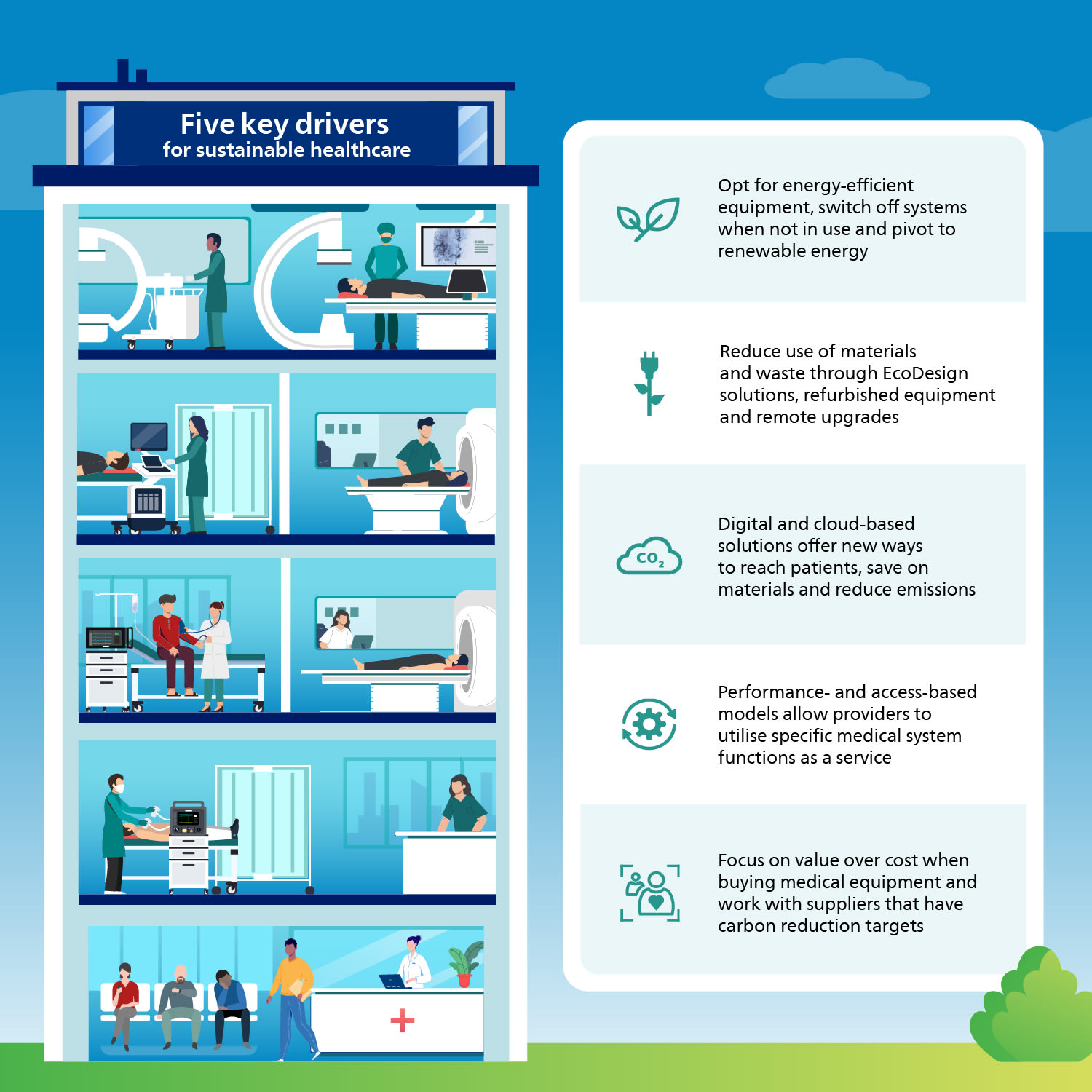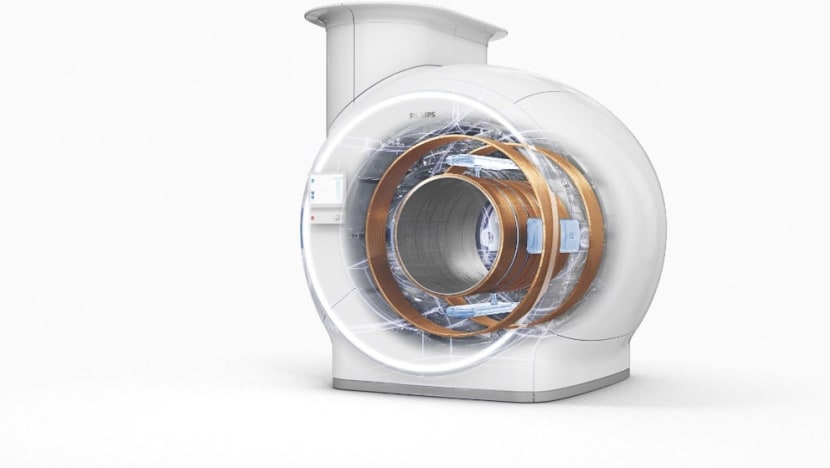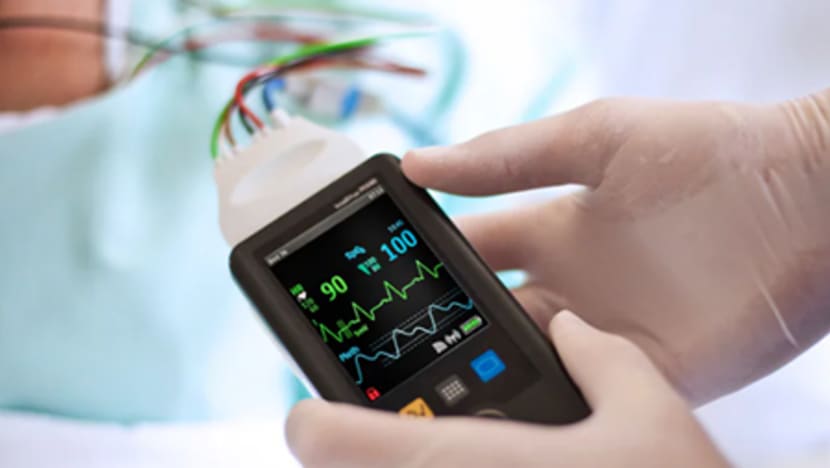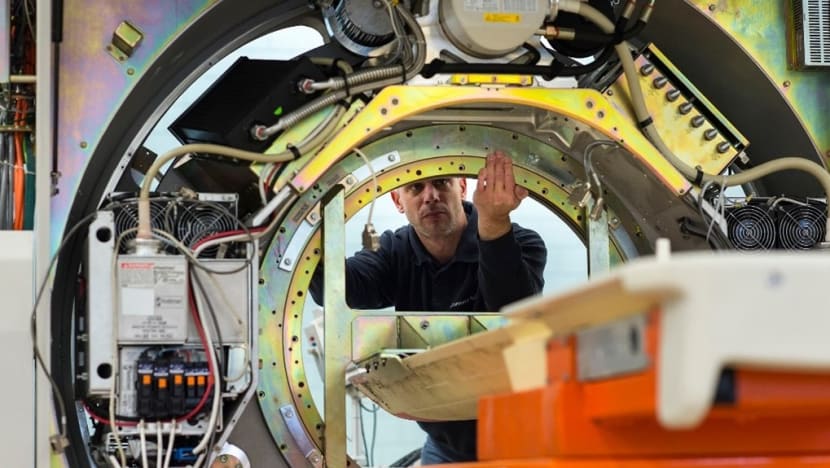World Environment Day: Forging a path to sustainable and resilient healthcare systems
Innovation and partnerships are key to the greening of healthcare in Asia Pacific.

Philips is committed to caring for people, patients and the planet by advancing sustainable healthcare. Photos and infographic: Philips

This audio is generated by an AI tool.
In the ever-evolving realm of healthcare, the connection between human health and environmental health has emerged as a key concern. Across the Asia-Pacific region, where 70 per cent of the 6.5 million annual global deaths from air pollution occur, the impact of climate change on public health looms large.
For instance, extreme weather events as well as rising temperatures and carbon dioxide levels increase cardiovascular risks and threaten vulnerable communities disproportionately. What’s more, the Organisation for Economic Cooperation and Development reports that the healthcare sector contributes 4.4 per cent to global nett emissions, utilises 10 per cent of all extracted raw materials annually and generates up to 13kg of waste per hospital bed each day.
Amid these challenges, the healthcare industry is undergoing unprecedented transformation. Cutting-edge technologies like artificial intelligence (AI) and health informatics are being adopted rapidly, enhancing efficiency and productivity to meet escalating healthcare demands while also creating opportunities to lower carbon emissions and improve healthcare access.
“Human health is closely connected to the health of the environment and we need to take care of both. That’s why it’s crucial to reduce carbon emissions and pave the way for a more sustainable and healthier future,” said Dr Diana Carver, assistant professor of radiology and radiological sciences, Vanderbilt University Medical Center (VUMC), a medical provider that operates multiple hospitals and health facilities in the United States.
5 LEVERS TO DRIVE SUSTAINABLE HEALTHCARE

Reflecting on these developments, Mr Peter Quinlan, managing director at Philips Asia Pacific (APAC), highlights the potential of sustainable innovations and design to mitigate the healthcare industry’s environmental footprint. He outlines five strategies to make healthcare systems more sustainable and resilient.
The first entails reducing energy consumption from the use of medical equipment – Philips’ EcoDesign programme prioritises improving the energy efficiency of its products.

The second strategy facilitates sustainable material use in medical systems by maximising circularity through EcoDesign solutions, refurbished equipment and upgrades.
For instance, helium, a crucial element for cooling MR (magnetic resonance) scanners, is conserved with technologies like Philips’ BlueSeal magnet, requiring only a fraction of liquid helium compared to conventional MR scanners. With over 1,100 installations globally, over 1.9 million litres of helium have been saved since 2018. Moreover, healthcare providers can extend equipment capabilities through on-site or remote upgrades. The latest MR systems allow the reuse of existing magnets and upgrading to newer systems without the inconvenience of installing new equipment. This approach reduces energy consumption and carbon footprint associated with manufacturing and transportation.
Thirdly, adopting digital technology enables remote interactions between patients and caregivers, reducing travel and corresponding emissions. Furthermore, transitioning to cloud-based solutions saves on materials required for on-site enterprise hardware and cuts carbon output. Research indicates an 84 per cent reduction in power consumption by using centralised cloud-based data centres compared to on-premise infrastructure.

Fourthly, healthcare providers are encouraged to adopt customisable service models. By implementing performance- and access-based models, organisations can offer specific functionalities of medical systems as a service, reducing upfront capital investment.
Finally, prioritising sustainable procurement is vital. For example, healthcare providers can work with suppliers committed to science-based carbon reduction targets. Philips supports collaborating with governments to advance green strategies. This involves setting clear standards, rules and guidelines within Philips that align with green procurement criteria.
COLLABORATIONS FOR CHANGE
Collaboration is key to the adoption of these strategies. According to Dr Carver, collaborating with sustainability experts enables the harnessing of combined expertise to uncover insights that could guide emission reduction efforts.
For instance, VUMC collaborated with Philips on a research initiative aimed at decarbonising the health system’s radiology department and establishing a blueprint that is environmentally friendly and cost-effective.

The joint assessment indicated that circular business models, like upgrading equipment, can reduce the total cost of owning an MR system by up to 23 per cent and carbon emissions by 17 per cent. For CT (computed tomography) equipment, using refurbished systems and upgrades can decrease ownership costs by up to 10 per cent and 8 per cent respectively, while reducing carbon emissions by 6 per cent and 4 per cent respectively.
THE PATH AHEAD FOR SUSTAINABLE HEALTHCARE IN APAC
In APAC, healthcare leaders are ramping up their sustainability efforts. According to the Future Health Index, only 3 per cent prioritised sustainability practices in 2021, but this number surged to 25 per cent in 2022.
IHH Healthcare, which operates over 80 hospitals in 10 countries, understands the critical connection between people and the planet. “The health impact of climate change is set to worsen,” noted Ms Yasemin Tecmen Stubbe, group head of sustainability, IHH Healthcare. “For instance, increased heatwaves contribute to more cardiovascular diseases, while air pollution drives respiratory diseases such as asthma.”
IHH Healthcare is committed to reducing its carbon footprint by utilising lower-carbon medical gases, enhancing waste and water management as well as transitioning to renewable energy sources. For example, solar panels have been installed in eight of the organisation’s 17 hospitals in Malaysia, with plans to extend the feature to all facilities by 2025. Additionally, its hospitals in Malaysia and Singapore have slashed the use of single-use virgin plastics in non-clinical areas by up to 99 per cent.
“These are steps in the right direction,” said Mr Quinlan. “Leadership commitment and collaboration are imperative in driving change and sustainability at scale across the healthcare value chain.”
Philips’ ‘Care Means the World’ campaign underscores the organisation’s dedication to sustainable healthcare. It aims to raise awareness and accelerate the transition to a more robust ecosystem by creating solutions to help healthcare providers care for patients and the planet through a combination of innovation, design and sustainability. “By doing so, we envision a future of better care for all,” added Mr Quinlan.
Learn how Philips is working to transform and decarbonise the healthcare industry.















